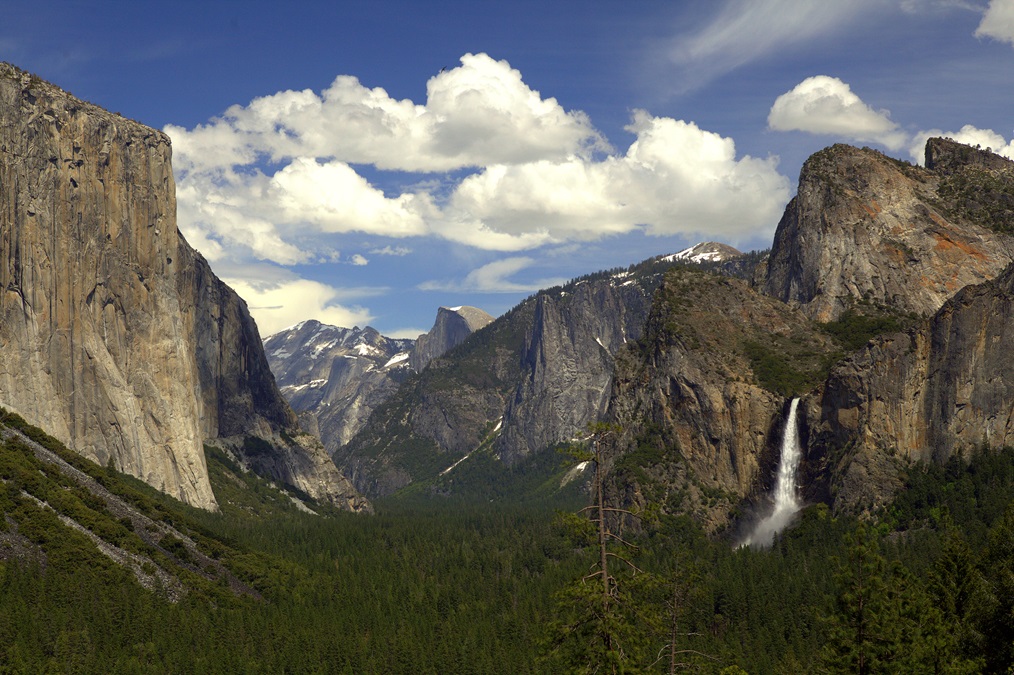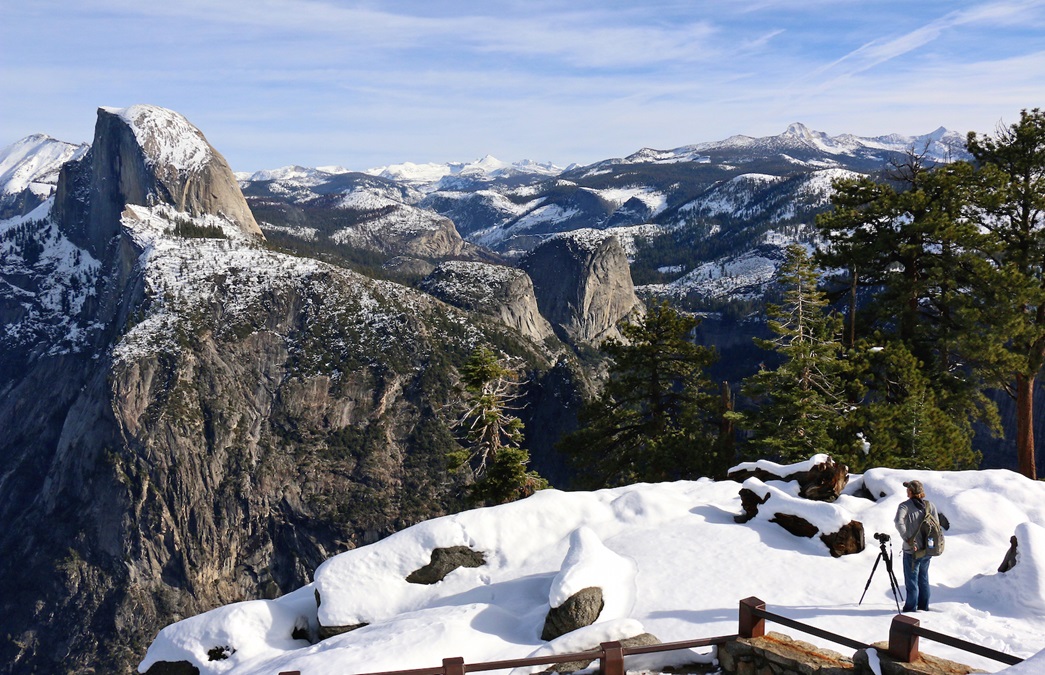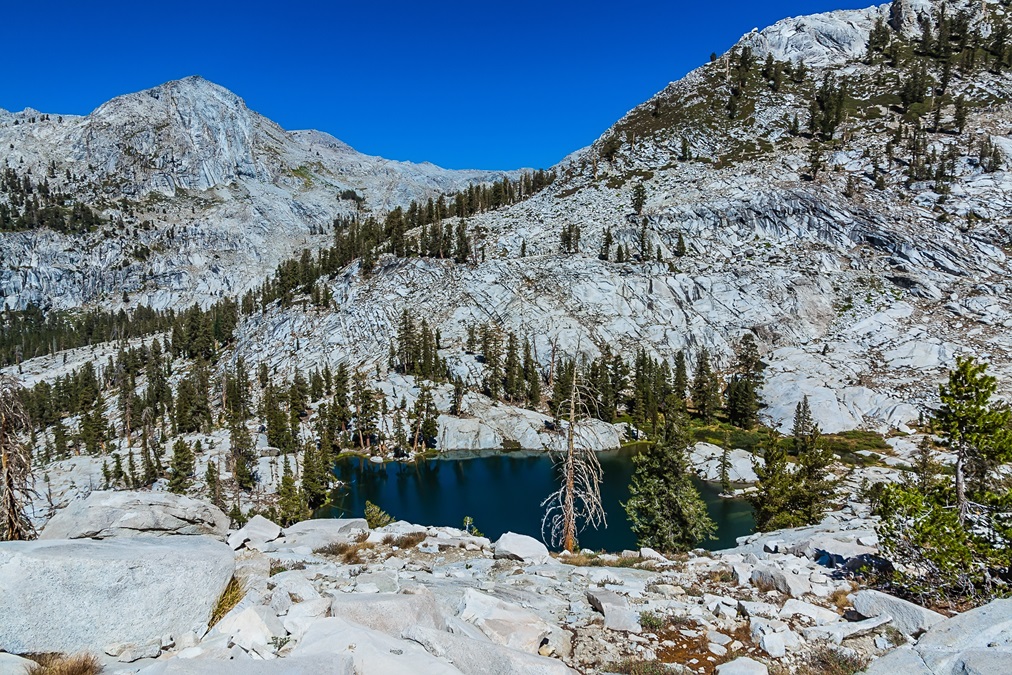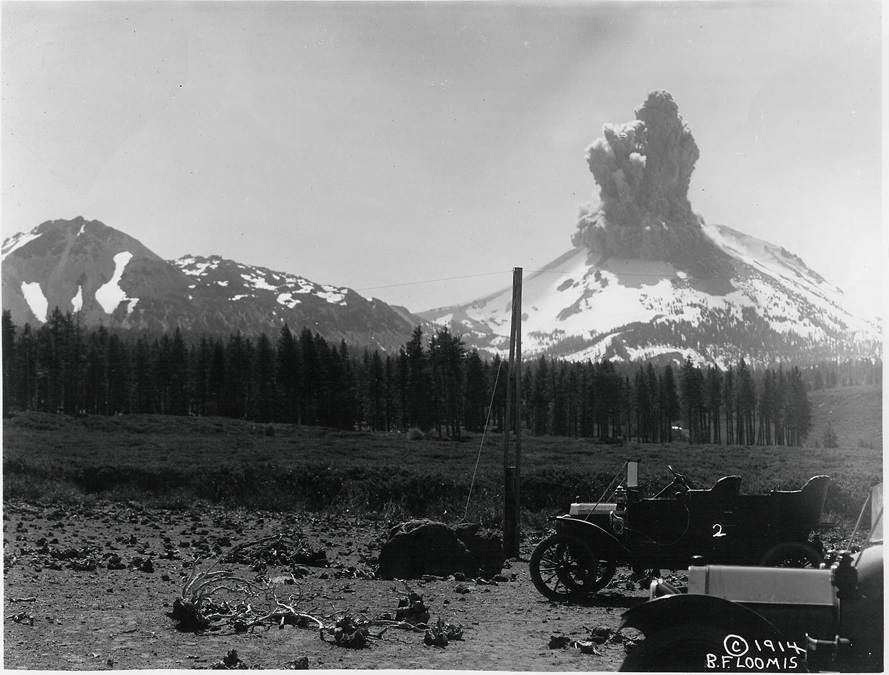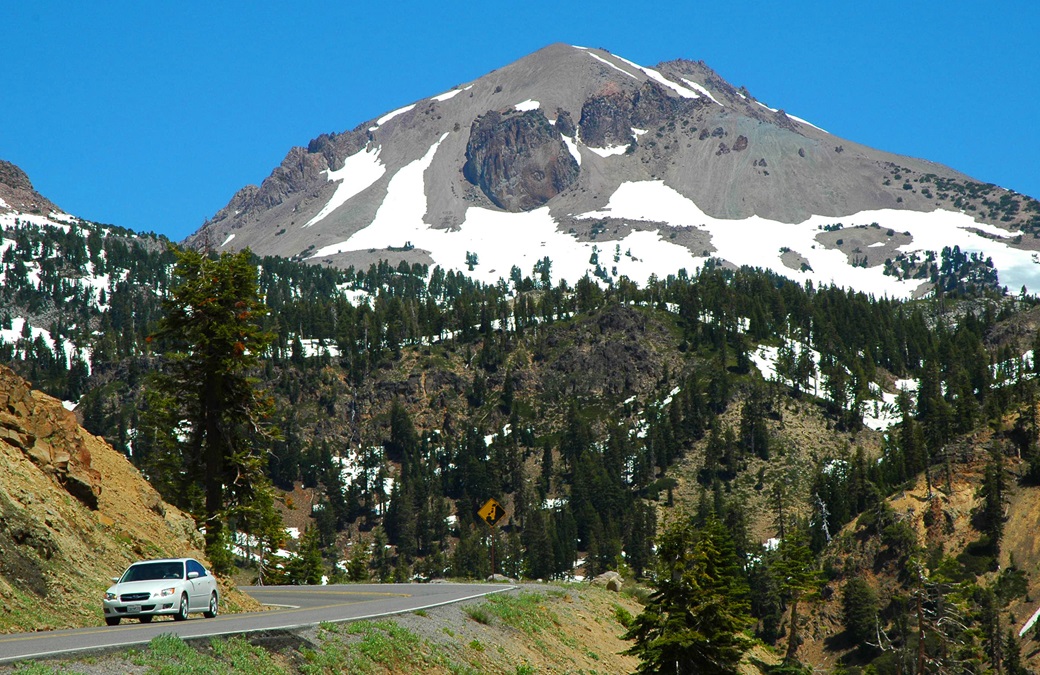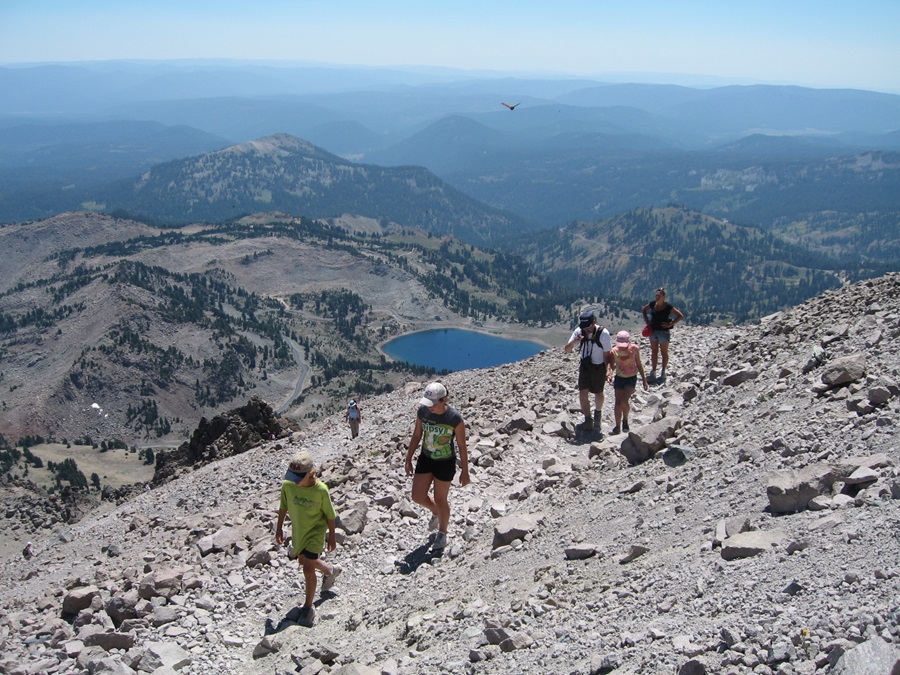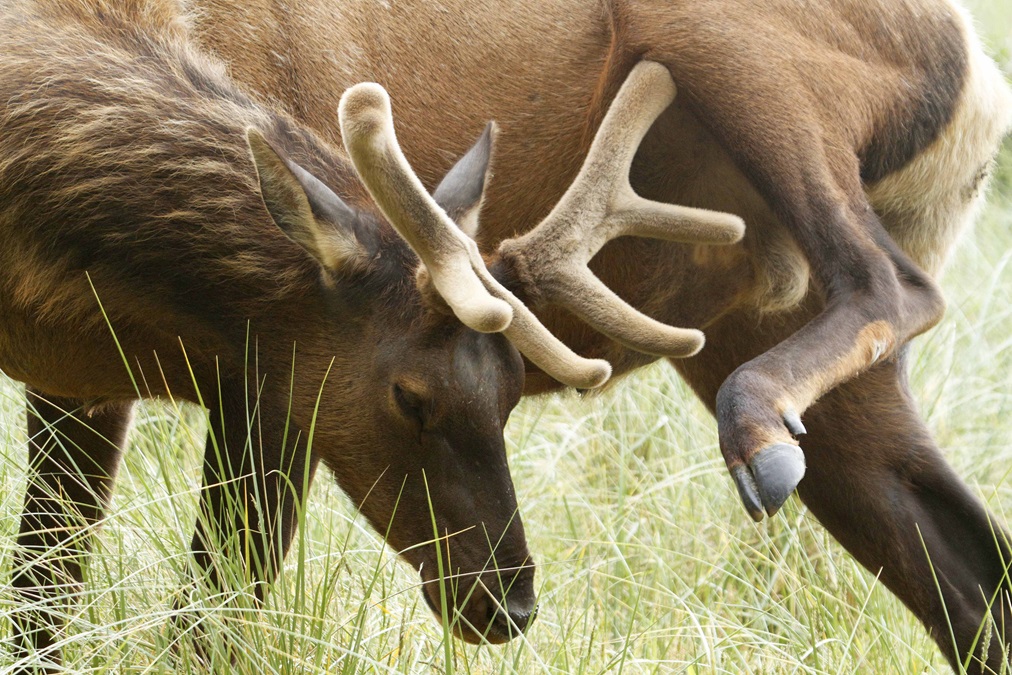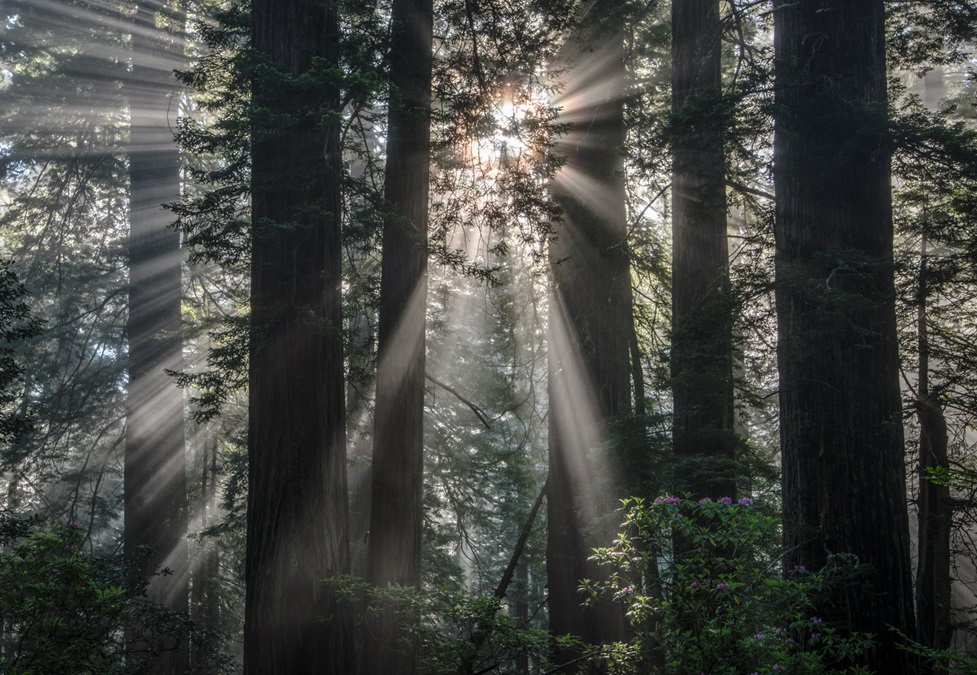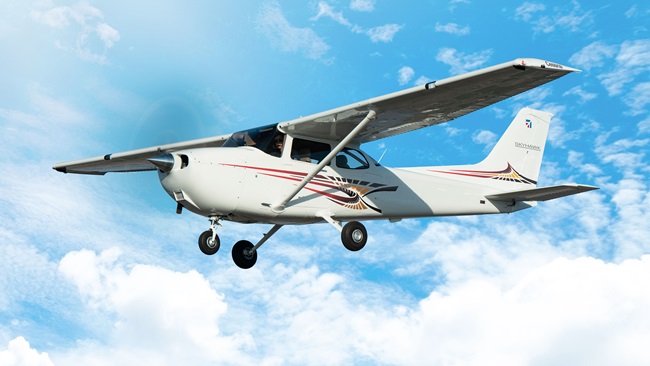Fly to the national parks in northern California
Big trees, big views, big waterfalls, and a volcanic park with some of the same features you’ll find at Yellowstone, but without the crowds. Stargazing, birdwatching, hiking—do it all in these northern California parks that preserve some of our most unique places.
Yosemite National Park, California: The crown jewel of California’s national parks, Yosemite is famous worldwide. The view of Yosemite Valley, with the great granite block of El Capitan on the left, Bridalveil Fall on the right, Half Dome behind, and the Merced River below, is etched into our collective minds. To see it yourself, you can fly to one of two airports and avoid crossing the Sierra Nevada. From the west, land at Mariposa-Yosemite, rent a car, and drive into the park, about 90 minutes to the Yosemite Valley Visitor Center. From the east you can land at Mammoth Yosemite Airport and drive over Tioga Pass, about 2.5 hours. This spectacular drive is well worth it but only possible during summer, when the pass is open. Once in the park, you’ll want to visit Yosemite Falls, hike up the Mist Trail to Vernal Fall, and continue to Nevada Fall. Mirror Lake is a great picnic spot. Drive to scenic viewpoints around the park or challenge yourself to a multi-day remote backpacking trip, climb Half Dome, walk and talk with a ranger, go fishing, take an art class, or make memorable photos. Yosemite offers a lifetime of adventures.

Lassen Volcanic National Park, California: To visit this park, which Sunset magazine called “The West’s most beautiful, least visited, wonderland,” fly to Rogers Field on the northwestern shore of Lake Almanor in northeast California. Nearby Lake Almanor Towing has rental cars; reserve well ahead. Inside the park and only open in summer, Drakesbad Guest Ranch has a heated swimming pool, massage services, guided horseback riding, fishing, and excellent cuisine. Otherwise, bring food and water as park facilities are few, but your reward is a total lack of crowds. You’ll see quiet meadows of wildflowers, jagged peaks, clear lakes, and, at Bumpass Hell, some of the hot, bubbling mudpots like you find in Yellowstone. The Lassen Peak Trailhead leads to the summit of the 10,457-foot volcano. With little light pollution, the park is great for astronomy. Manzanita Lake has easy hiking trails, fishing, primitive cabins, a camp store, and campsites.
Redwood National and State Parks, California: These parks stretch along 40 miles of rugged northern California coastline, just south of the Oregon border. The parks protect 45 percent of all remaining coastal redwoods, the tallest trees in the world. Fly to Crescent City, just north of the parks, or Arcata, just south of the parks. The parks have no lodging (just camping) so I prefer Arcata because nearby Trinidad is lovely, I’ll dine at the Larrupin Café any chance I get, and many of the tallest trees are in the southern sections of the park. A quiet trail hike among these giants is awe-inspiring. Or, explore coastal trails and tide pools. For a change of pace, rangers lead kayak and hike-and-paddle tours, or you can take a guided bike tour through the trees.

